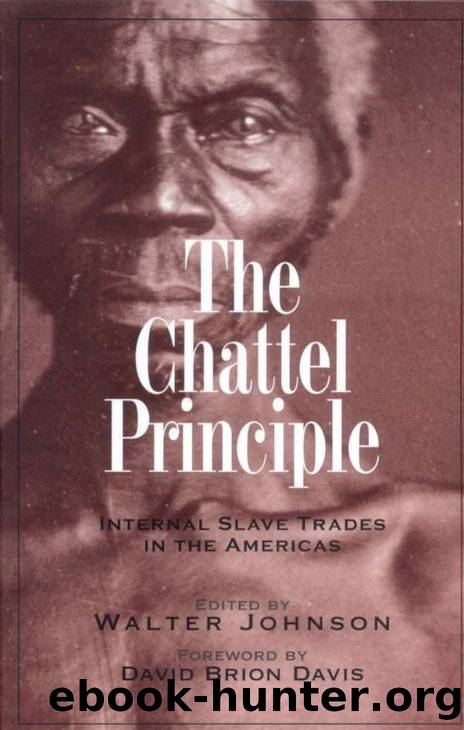Cindy Sherman: The Complete Untitled Film Stills by Cindy Sherman

Author:Cindy Sherman [Sherman, Cindy]
Language: eng
Format: mobi, azw3, epub
Tags: Catalogs, Exhibitions, Photography, General, Museums, Tours, Individual Photographers, Artists' Books, Collections, Points of Interest, Travel
ISBN: 9780870705076
Publisher: The Museum of Modern Art
Published: 2003-01-15T05:06:24.499698+00:00
Afro-Virginians had long been cognizant of the larger Afro-American world in the Caribbean. News of the Haitian Revolution (1794â1804) had reverberated throughout the Caribbean rim, including the Chesapeake, to which thousands of white and black refugees had fled. Knowledge about Haitiâs black revolution informed Afro-American culture, perhaps even influencing Gabrielâs conspiracy in Virginia in 1800. Although African Americans had to sift any information about Haiti through the sieve of proslavery propaganda about the supposed chaos of freedom there, Haiti remained an important touchstone for their thinking about freedom, and it helped keep the Caribbean at large within their scope.âÏ In 1829, slaves aboard the schooner Lafayette, bound from Norfolk to New Orleans, rose in an unsuccessful revolt. We cannot know whether these rebels intended to head for the black republic in the Caribbean (or indeed, whether they took any ironic inspiration from the republican namesake of their vessel). But three years earlier, a Baltimore traderâs slaves, bound for Georgia on board the Decatur, seized control of that ship and did demand to go to Haiti. News of these and other episodes in the coastal U.S. slave trade may have passed through the grapevine, resonating in the Creole rebelsâ memories and heightening their awareness of opportunities for freedom in certain specific Caribbean locales. Slaves from the United States had already found freedom in the Bahamas, not by their own design but by sheer luck and the actions of Bahamians. In 1830 or 1831, the Comet, out of Alexandria, Virginia, ran aground on the False Keys; wreckers from Nassau freed its 164 enslaved passengers. In 1835, the Enterprise, sailing from the District of Columbia, put into Nassau seeking shelter from a storm. Local activists successfully pressed the courts to free the seventy-eight enslaved passengers. Finally, and most important, less than a year before the Creole uprising, in October 1840, the schooner Formosa (referred to as the ââHermosaââ
in Senate documents) ran aground on the Spanish key of Abaco. Bahamian wreckers rescued the passengersâincluding thirty-eight enslaved African Americans who were being shipped by a Richmond trader and who were not returned by the British colonial government.ââ« Word of their emancipation reached the enslaved population in Virginia.
The Creole insurgents knew about the Formosa slavesâ liberation in the Bahamas, and they knew and recited the important details to their captive
210
Phillip Troutman
crew. The rebels referred to the Hermosa. They made reference to Abaco (mistaking it for the destination) and to ââBritish islands,ââ as opposed to those under other colonial powers.âΩ Two of the revoltâs leaders, Ben Blacksmith and Doctor Ruffin, made it clear to the shipâs crew that ââthey did not want to go anywhere else but where Mr. Lumpkinâs negroes went last year.âââ¤â This clarifying detail was important to them. It was intended to leave no doubt in the minds of the captive crew as to their intended destination. It was the kind of detail that might have been repeated in the multiple tellings of the story, as suggested by its appearance as a narrative fragment.
Download
Cindy Sherman: The Complete Untitled Film Stills by Cindy Sherman.azw3
Cindy Sherman: The Complete Untitled Film Stills by Cindy Sherman.epub
This site does not store any files on its server. We only index and link to content provided by other sites. Please contact the content providers to delete copyright contents if any and email us, we'll remove relevant links or contents immediately.
| Artists' Books | Essays |
| Monographs |
Shoot Sexy by Ryan Armbrust(17659)
Portrait Mastery in Black & White: Learn the Signature Style of a Legendary Photographer by Tim Kelly(16953)
Adobe Camera Raw For Digital Photographers Only by Rob Sheppard(16906)
Photographically Speaking: A Deeper Look at Creating Stronger Images (Eva Spring's Library) by David duChemin(16623)
Bombshells: Glamour Girls of a Lifetime by Sullivan Steve(13976)
Art Nude Photography Explained: How to Photograph and Understand Great Art Nude Images by Simon Walden(12975)
Perfect Rhythm by Jae(5324)
Pillow Thoughts by Courtney Peppernell(4210)
The Book of Joy by Dalai Lama(3901)
Good by S. Walden(3488)
The Pixar Touch by David A. Price(3364)
A Dictionary of Sociology by Unknown(3031)
Fantastic Beasts: The Crimes of Grindelwald by J. K. Rowling(2994)
Humans of New York by Brandon Stanton(2835)
Stacked Decks by The Rotenberg Collection(2812)
Read This If You Want to Take Great Photographs by Carroll Henry(2664)
On Photography by Susan Sontag(2575)
Insomniac City by Bill Hayes(2499)
Photographic Guide to the Birds of Indonesia by Strange Morten;(2490)
